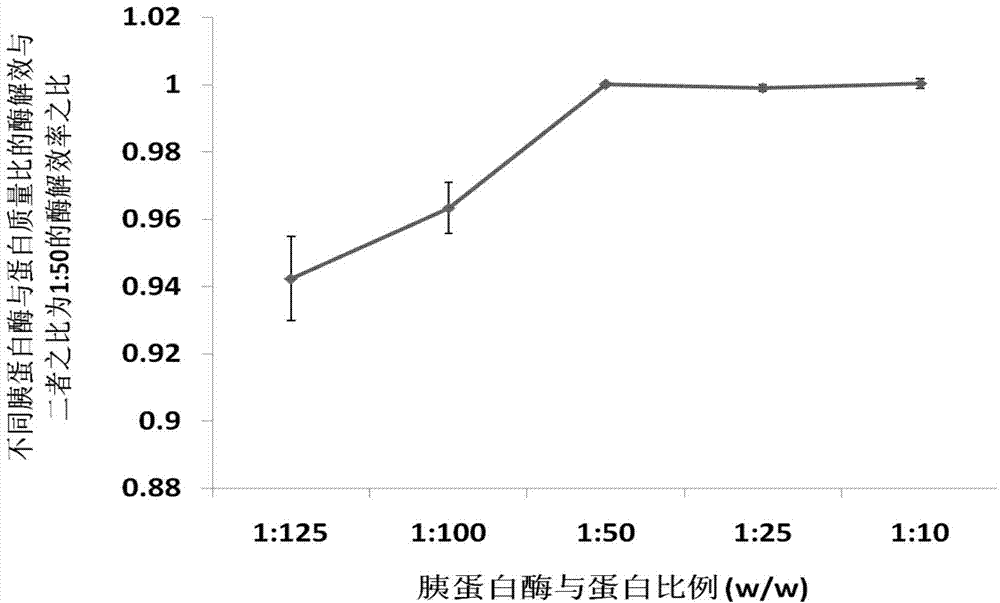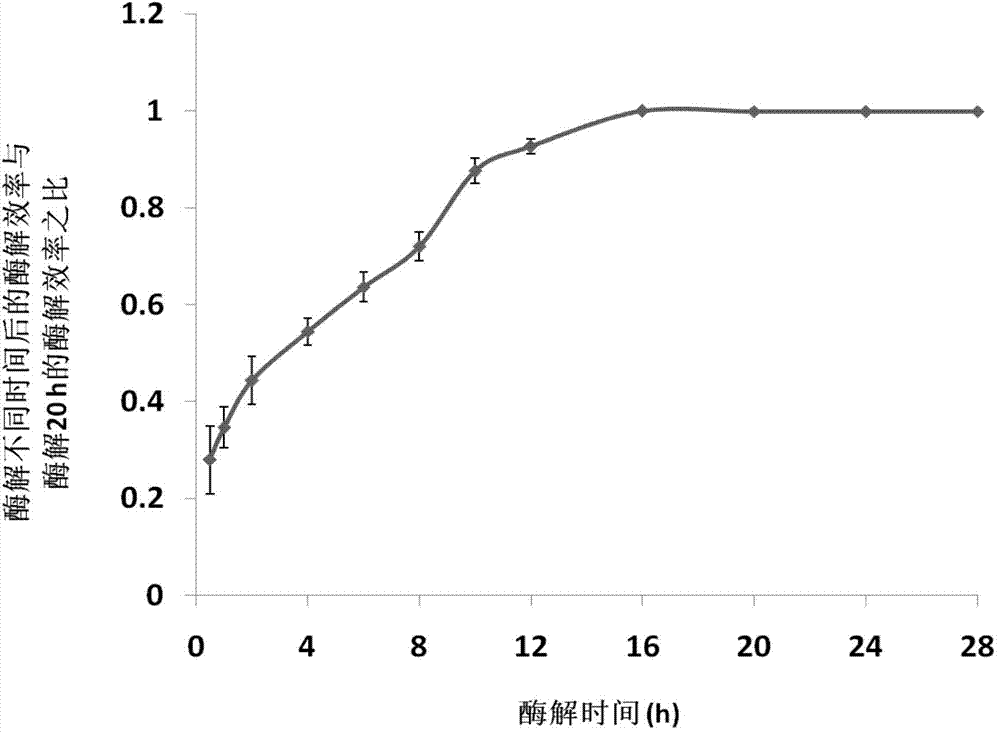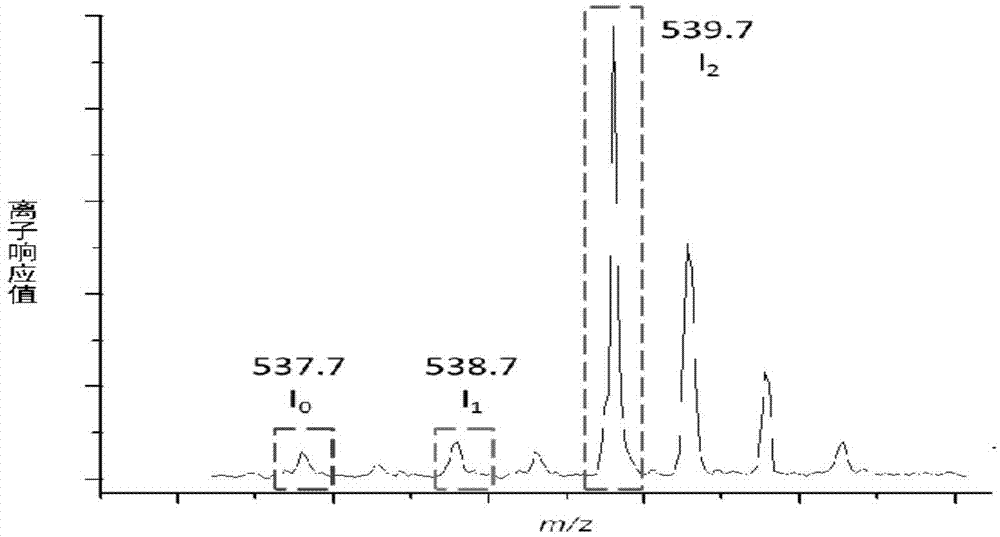Polypeptide marker for early diagnosis of diabetes mellitus
A diabetes diagnosis and marker technology, applied in the biological field, can solve the problems of changing protein molecular quality and detection difficulties
- Summary
- Abstract
- Description
- Claims
- Application Information
AI Technical Summary
Problems solved by technology
Method used
Image
Examples
Embodiment 1
[0083] Example 1 In vitro establishment of a simulated in vivo glycosylation model based on HAS single protein screening of glucose-sensitive peptides
[0084] 1. Preparation of in vitro glycosylation samples
[0085] The preparation of in vitro glycosylation samples can basically be based on the methods reported in the literature [Sattarahmady, N., et al., Formation of the molten globule-like state during prolonged glycation of human serum albumin. [J]. Biochim Biophys Acta, 2007.1770( 6): p.933-42]. Unmodified human serum albumin (HSA) (purity ≥ 96%, purchased from Beijing Baierdi Biotechnology Co., Ltd.) was prepared in 50mM PBS (pH7.4) buffer solution with a physiological concentration (40mM / mL ), were incubated with four different concentrations of D-glucose in a 37°C water bath for 10 days, 20 days, and 30 days, so that the molar ratios of HSA to D-glucose were 1:10, 1:41.5, 1:83, and 1:415. The 4 glucose concentrations are based on physiological glucose concentration ...
Embodiment 2
[0174] Example 2 Validation of 11 target peptides of the present invention in healthy human plasma samples
[0175] 1. Source of plasma samples and determination of protein concentration
[0176] Plasma samples from 12 healthy people (6 males and 6 males) were provided by Beijing Institute of Technology Hospital, and all biochemical indicators of the plasma donors were normal after testing.
[0177] Mix equal volumes of 12 samples, and vortex to make the mixture even. The protein concentration in the mixed sample was determined by Coomassie brilliant blue method (Bradford) to be 82.4 μg / μL.
[0178] 2. Preparation of mixed plasma in vitro glycosylation samples
[0179] The preparation of the in vitro glycosylation sample of mixed plasma is similar to the preparation of the standard protein in vitro glycosylation sample (see item 1 of Example 1 for the method). 12 cases of mixed plasma were incubated with 4 different concentrations of D-glucose in a 37°C water bath for 10 days...
Embodiment 3
[0249] Example 3 Verification and Application of Polypeptide Markers for Diabetes Detection in Clinical Samples
[0250] Through Example 2, the present invention has screened 11 target peptides through the standard HSA in vitro glycosylation model. Then, the above target peptides were initially verified by using healthy human plasma samples under the same in vitro model conditions, and 5 peptides that could not be detected in complex plasma samples were eliminated. Next, a large number of actual clinical samples from healthy people, type 2 diabetes patients and people with impaired glucose tolerance need to be used to further verify the six screened peptide biomarkers that may become diabetes. The experimental process is as follows Figure 24 shown.
[0251] It can be seen from the experimental flow chart that two main experimental steps are enzymatic hydrolysis and HPLC-MS detection from the sample collection to the detection to obtain the peak area ratio of the target pept...
PUM
| Property | Measurement | Unit |
|---|---|---|
| strength | aaaaa | aaaaa |
Abstract
Description
Claims
Application Information
 Login to View More
Login to View More - R&D
- Intellectual Property
- Life Sciences
- Materials
- Tech Scout
- Unparalleled Data Quality
- Higher Quality Content
- 60% Fewer Hallucinations
Browse by: Latest US Patents, China's latest patents, Technical Efficacy Thesaurus, Application Domain, Technology Topic, Popular Technical Reports.
© 2025 PatSnap. All rights reserved.Legal|Privacy policy|Modern Slavery Act Transparency Statement|Sitemap|About US| Contact US: help@patsnap.com



